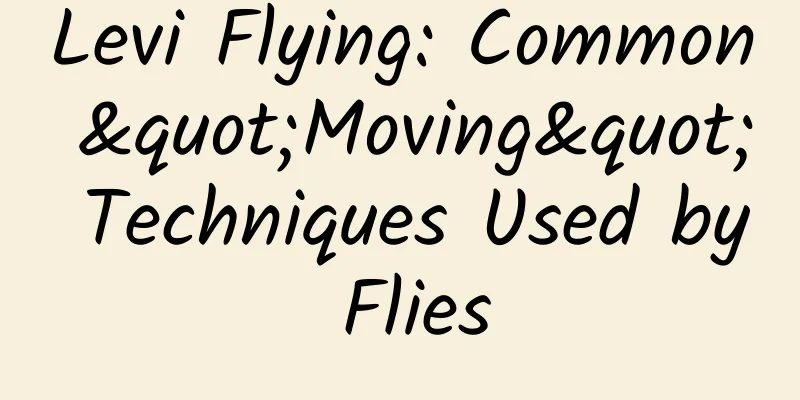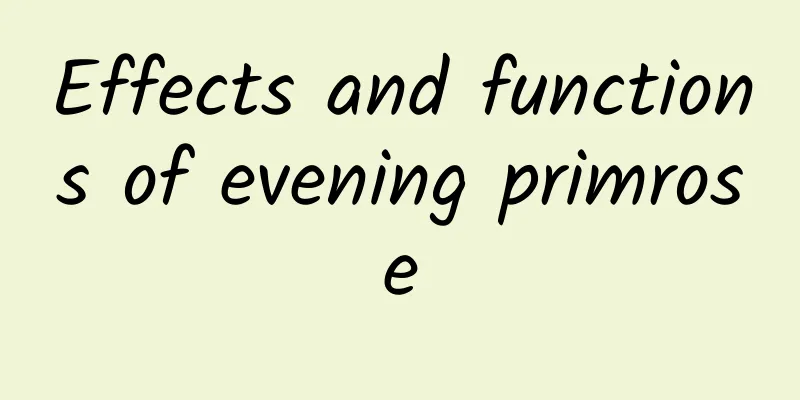Levi Flying: Common "Moving" Techniques Used by Flies

|
As the temperature rises, flies become more active. Hitting flies is a technical job because the flight trajectory of flies is difficult to predict. However, there is a powerful mathematical principle behind this flight trajectory - Levy flight. Why it's hard to hit flies Lévy flight is named after French mathematician Paul Lévy. It refers to a random walk with a heavy-tailed probability distribution of step length, which means that there is a relatively high probability of large steps in the process of random walk. Compared with a random walk with no heavy-tailed step length distribution, the trajectory of Lévy flight is like flying from time to time. Obviously, Lévy flight can help flies easily avoid attacks by predators. In 2008, the team of biologist Masakazu Shimada of the University of Tokyo found that the flight route of houseflies belongs to Lévy flight. Not only house flies, but fruit flies are also masters of Levy flight. For example, when Drosophila melanogaster flies fly, they often fly in straight lines interspersed with rapid 90-degree turns. Lévy flight and Brownian motion We know that some tiny particles have Brownian motion. Although Brownian motion is also a random walk, Lévy flight is different from Brownian motion. The length of each step of Brownian motion is concentrated in one area, and when the probability of this step length is plotted, a normal distribution curve is presented. In the Levy flight diagram, the distance of each step conforms to the power law. In other words, in the Levy flight motion, most of the steps are short, but a few are long. The different nature of the step lengths of Levy flight and Brownian motion directly leads to the fact that Levy flight is more efficient than Brownian motion. With the same number of steps or distance, the displacement of Levy flight is much larger than that of Brownian motion, and it can explore a larger space. This is crucial for organisms that need to hunt in unknown areas. As expected, many of the random movements of life are Lévy flights, not Brownian motion like molecules. For example, when sharks and other marine predators know that there is food nearby, they use Brownian motion because it helps to "clear out" hidden food in a small area. However, when food is scarce and new territories need to be opened up, marine predators will abandon Brownian motion and adopt the strategy of Levy flight. In 2008, a study published in the journal Nature found that researchers attached trackers to 55 different marine predators in the Atlantic and Pacific Oceans (including silky sharks, swordfish, blue marlin, yellowfin tuna, turtles and penguins) and followed their movements over 5,700 days. After analyzing 12 million of their movements, the researchers found that the movements of most marine predators when food is scarce are consistent with the characteristics of Lévy flight. More interestingly, the distribution of prey, such as krill, also conforms to the characteristics of Lévy flight. Not only that, the foraging routes of amoeba, plankton, termites, bumblebees and other organisms also have similar patterns. Levy flight seems to be a common law for organisms to survive in an environment with scarce resources. In fact, for wandering animals, finding the next meal depends not only on luck but also on mathematics. In the absence of any knowledge of the distribution of prey, the efficiency of Levy flight is much higher than that of Brownian motion, which may be why they switch to Levy flight mode when they try their luck. Therefore, biologists later proposed the Levy flight hypothesis to summarize the "movement" of animals when they leave their fate to fate. Levi Flying into Life Not only wild animals, but many natural phenomena also have the characteristics of Levy flights. For example, when a tap drips, the time difference between two drops of water and the interval between two beats of a healthy heart all have the characteristics of Levy flights. Financial economists even use Levy flights to study financial markets. In 1997, programmer Hank Eskin created a website specifically to study where money goes. Users can enter the local postal code, banknote serial number and other information on the website to track the "whereabouts" of the banknote in their hands. Later, Dirk Brockmann, a physicist at Humboldt University of Berlin, and his colleagues noticed this website while studying infectious diseases. They believed that the transmission route of infectious diseases was similar to that of banknotes, so they used the data from this website for analysis. After analyzing the trajectories of 460,000 banknotes, they confirmed their conjecture: the spread of infectious diseases, like the spread of banknotes, conforms to the characteristics of Levy's flight. They published this research in the journal Nature in 2006. Brockman's discovery was contrary to the mainstream epidemiological theory at the time (mainstream epidemiological theory holds that the probability of infection for everyone is the same), but Lévy flights can predict the spread of disease better than traditional theory, so many epidemic models now use Lévy flights. Text: Kindred |
>>: Fun fact: Why don’t herbivores eat meat?
Recommend
Wild Ophiopogon japonicus pictures
As people's awareness of health and wellness ...
Is Poria powder effective for weight loss?
Poria cocos is a well-known medicinal material. M...
The efficacy and function of Bodhi bark
Bodhi bark is a common Chinese medicine in clinic...
The efficacy and function of Changchunqi
Most Chinese medicinal materials have good effect...
Why are all the Chang'e series satellites launched from the Xichang Satellite Launch Center?
There is a small city called Xichang in the south...
Foreign trade B2C e-commerce Lightinthebox research report – IPO version
By Li Yan Lightinthebox founder Guo Quji, an MBA ...
In order to restore the ecology, they decided to play "music" outdoors
Produced by: Science Popularization China Author:...
Graduated from a vocational high school and started from a junior college, why is he one of the top 2% of scientists in the world?
On September 16, 2024, Stanford University in the...
Why do I feel more beautiful after taking a shower?
Reviewer of this article: Zhou Xiaobo, Doctor of ...
What are the effects and functions of Imperata root?
Imperata root is a common Chinese medicine. Its m...
Is it good to drink Panax notoginseng powder regularly?
Nowadays, people often pay attention to their phy...
Romantic attraction or fatal temptation? Who are the night lights affecting subtly?
Artificial light at night can change the behavior...
What are the traditional Chinese medicines for treating tinea cruris
Tinea cruris is a skin disease caused by bacteria...
The efficacy and function of shark skin
I believe many people are familiar with shark ski...
The efficacy and function of snow pear paste
In daily life, people are not only very familiar ...









